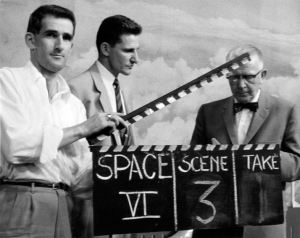RSS: Rich Site Summary aka Really Simple Syndication…
Web syndication is a form of syndication in which website material is made available to multiple other sites.
(Credits to Duck Duck Go for the definition)
In looking at my RSS feeds I came across an interesting blog post from cineophile David Boardwell on the long take.
Boardwell states that whilst cinema began with the long take, it then became popular in the early 1940’s and again in the 1990’s when the Movie Brats began to dominate Hollywood Cinema.
“It does seem that these big boys appearing to compete to see how long they could hold their shots and how complicated they could make them.”
However, there’s more to it then that. In the 1920’s quick cuts became more popular, the montage editing style developed in Russia had a great deal to do with shaping this.
It was mainly down to the technological developments that the extended take gained popularity Better dollies were invented, allowing for smoother camera transitions and easier navigation around objects. Of course the move to digital recording has also played it’s part, allowing for larger amounts of footage to be recorded – without the need to change the reel of film.
Bordwell suggests that now, the long take finds it’s place in Festival Cinema, or the “ambitious film festival” citing multiple examples from the Vancouver International Film Festival. I agree with his observation that Hollywood directors have generally abandoned the long take. Perhaps in favour of fast edits to keep audiences hooked, having to pay close attention to the action in the moment rather then being able to take in the bigger picture and, of course, to keep the money rolling in.
While I have not yet traversed the routes of overseas film festivals I look forward to attending at least one a year … when I’m grown up and rich…
In the meantime, I will content myself with online research and viewing.
Last semester I did a fair bit of research studying long takes.
I found a website that had – in some guy’s opinion – the Twenty Greatest Long Takes in Film History. Here’s the link. geekweek.com, cool right? Well I am at home blogging on a Friday night.
The long take amazes me firstly because I do not ever think I would have the patience to see through the production of an extended take. Furthermore, the best long takes often go unnoticed to the audience submerged in the film – for example, it was only after I pointed out to my family that in watching Stanley prepare for the game show in Magnolia (Paul Thomas Anderson, 1999) what we were watching was without cuts that my dad began commented “Wow – that’s great I never would’ve noticed”. And thirdly, I admire the extended take because some of the best of them contain much more then just establishing sequences or following someone traverse through a building.
Some of the most memorable extended takes I’ve seen include:
- Russian Ark (2002)- an entire 90 minute film all done in one single take. Here the narrative is not the most engaging element in the film, it is the huge number of extras, period costumes, and use of the moving camera.
- The opening shot from A Touch of Evil (1958) – This is a classic and the use of the crane is phenomenal. It’s also in black and white which makes it even better!
- Last up and probably the most notable of the extended takes would have to be this fight sequence in Old Boy (2003) – This sequence is amazing. Despite the fact that the camera and frame move along, perpendicular to the action throughout the scene the choreography makes this sequence amazing.
Go see for yourself – here’s the clip: Extended Take – Old Boy (2003)
